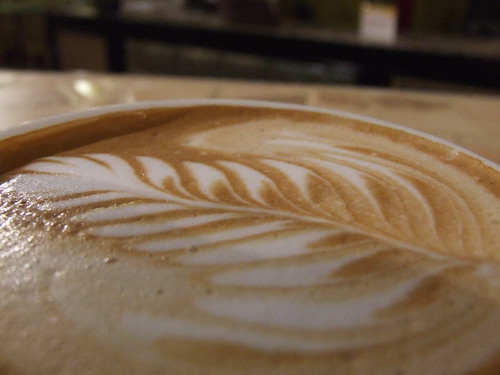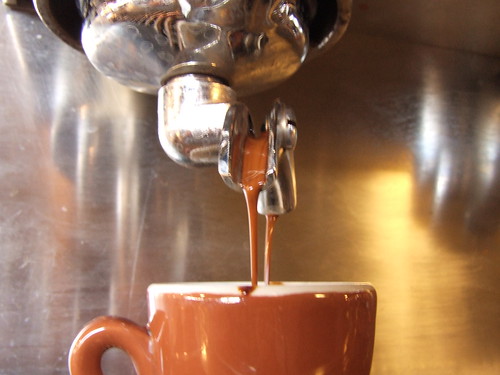
A care package arrived today from our friend Matt Brinski. Matt email me out of the blue recently and offer me his Scace to play with. A big thanks goes out to Matt for his trust and generosity!!!
- Ben


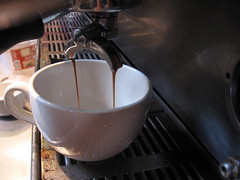
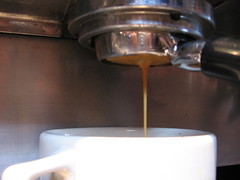
Bottomless portafilters are great for training but we have been big fans of spouted portafilters for a while.
Whatever we were perceiving, we live by it in most cases. Long ago, the novelty of watching bottomless shots wore off and we began to drool over the thought of something like teflon portafilters.
Whatever your opinions may be, it's interesting to see other people musing over this topic though and how many different ideas exist. Phil offers an introspective look at the topic and there was even a thoughtful post about this on coffeed.
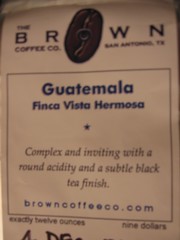
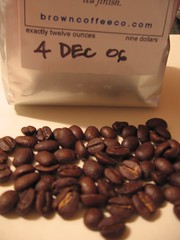
"The lot that Aaron (Brown Coffee Co.) has I believe is from El Eden which means Eden. I think it was my aunt Delmi that gave this parcel it's name after the Garden of Eden in the Bible because it has two springs on it that yield 2 creeks that end up merging and it reminded her of the Tigris and Euphrates river in the middle east that is supposedly where the garden of Eden was. It is very very steep, but has great trees (non coffee) and of course the water and great partial exposure as it is it's own mini ridge...
This was 1 of 3 lots that Anacafe Awarded (the Martinez Family) earlier this year granting (them) the lock on this years supply to Ancafe for what they use to promote the region of Huehue with around the world at trade shows and such." - Edwin Martinez of Finca Vista Hermosa
When we first cupped this coffee, we were largely interested in why it was so even and how it was so clean. It seemed that for this price, this coffee was a heck of a steal. It was so evenly sorted and so few visible defects that we couldn't believe the price. When I got the low down from Edwin, the quality we were seeing made sense. The coffee is solid because it comes from an area with potentially good terroir and they must take care of it in processing.
We cupped this coffee and got a satisfying experience. It was clean and sweet, the roast smoothed out and the cup clarified as it began to cool.
The cupping notes yielded a light layer of roast cocoa, mineral notes, dark sugar, and clean fruit toned acidity underneath. The coffee could go lighter because of it's quality, but I would not enjoy darker. The roast was part of the flavor balance and did not overwhelm the origin flavors allowing them to show through.
Making a snap judgement on this coffee was hard, but it really seemed I preferred the clarity of filter over french press in this case. The 'El Eden' was very representative of what I have come to associate with the good flavor characters of the Huehuetenango region of Guatemala and I will probably sample it again in the future.


